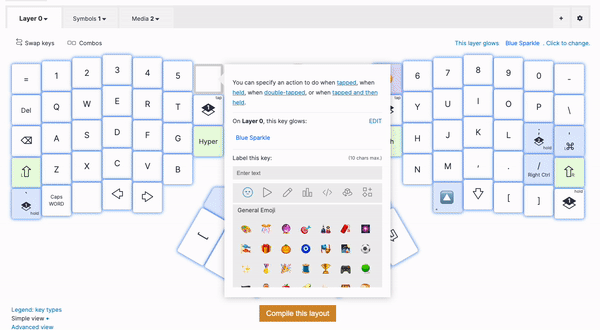Macros! You've been asking for this for years now. It took us time, because we wanted to be thoughtful about security. We're quite happy with where we landed. Here's how you can send an item to the trash on macOS and then empty the track in a single keystroke (and assign a suitably dramatic icon for this action):

Now, let's dig in.
Character limitation
Macros used to be limited to four characters, but now they can have up to five characters, plus an optional Enter keystroke at the end. This is because most passwords are longer than five characters, and we wanted to ensure macros are not used to store such sensitive information.
Of course, some sensitive info is contained in shorter strings, such as credit card expiration dates and CVVs. Still, please don't use Oryx macros to store these.
Individually modify every keystroke
The main idea behind macros is to allow you to automate sequences of software actions. To make this easy, you can add different modifiers (or no modifiers at all) to each keystroke your macro sends.
Use dynamic macros for longer strings
Remember: About a year ago we launched dynamic macro support. Those are still around and are fully supported. You can tap a key to record a dynamic macro on your keyboard as you use it. The macro is then only stored locally on your keyboard, and it's ephemeral (will not survive a reboot). Dynamic macros support longer text strings, too.
Your turn
What macros will you come up with? So far in the team, we've automated some common Vim tasks and accessed Windows settings.

